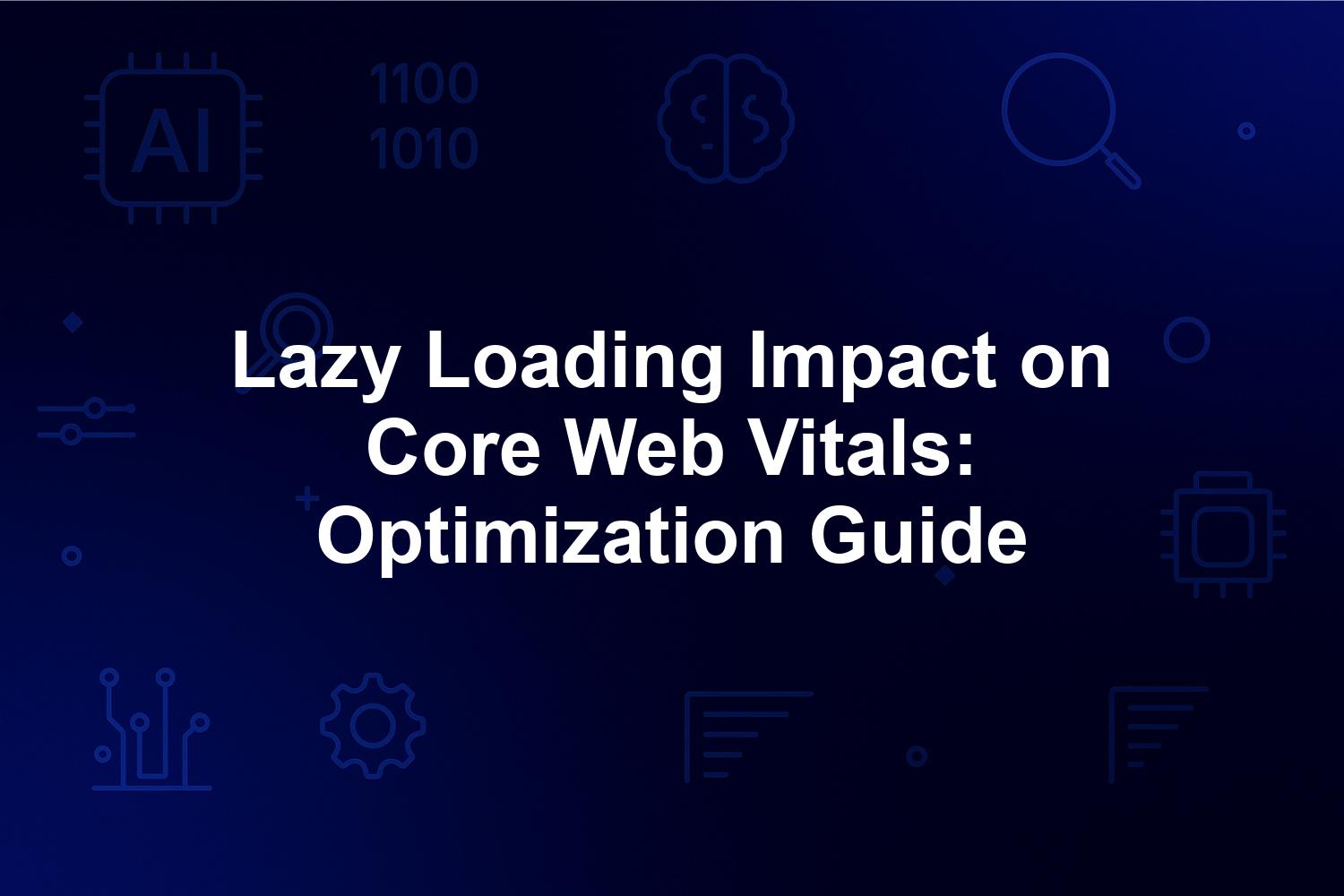Blog
Lazy Loading Impact on Core Web Vitals: Optimization Guide

Lazy loading is more than just a buzzword; it’s a critical technique that can significantly enhance your website’s performance and user experience. By delaying the loading of images and other non-essential resources until they are needed, lazy loading can improve your Core Web Vitals, which are vital for SEO and user satisfaction. This comprehensive guide delves into the impact of lazy loading on Core Web Vitals and provides actionable steps for optimization.
Understanding Core Web Vitals
Core Web Vitals are a set of specific factors that Google considers essential for measuring the user experience on a website. These metrics focus on three key areas:
- Largest Contentful Paint (LCP): Measures loading performance.
- First Input Delay (FID): Measures interactivity.
- Cumulative Layout Shift (CLS): Measures visual stability.
By optimizing these metrics, your website can achieve better rankings in search results and provide a smoother experience for users.
The Role of Lazy Loading
What is Lazy Loading?
Lazy loading is a technique that defers the loading of non-essential resources—like images and iframes—until they’re within the viewport. This reduces the initial load time and improves the site’s interaction speed.
Benefits of Lazy Loading
- Improved Load Times: Lazy loading minimizes the number of resources loaded initially, speeding up LCP.
- Enhanced User Experience: By prioritizing essential content, users can interact with your site faster.
- Reduced Bounce Rates: A quicker loading time keeps visitors engaged and reduces the likelihood of them leaving prematurely.
How Lazy Loading Affects Core Web Vitals
Optimizing Largest Contentful Paint (LCP)
To improve LCP, lazy loading ensures that images and videos do not occupy bandwidth until they are needed. This means less strain on the server and quicker load times for visual elements that genuinely matter to the user.
Enhancing First Input Delay (FID)
By prioritizing scripts and other interactive elements that load on page entry, lazy loading assists in maintaining a swift FID. Users can engage with your site seamlessly, thanks to better-optimized loading sequences.
Minimizing Cumulative Layout Shift (CLS)
One frequent complaint from users is unexpected shifts in page layout. Lazy loading helps mitigate this issue by ensuring that elements are loaded in a way that maintains their place on the screen, promoting visual stability.
Tips for Implementing Lazy Loading
- Choose the Right Library: Utilize libraries like lazysizes that simplify the lazy loading process.
- Optimize Images: Ensure your images are in the right formats and sizes for better performance.
- Use Placeholder Images: Consider displaying a low-quality image as a placeholder while the actual image loads to improve perceived performance.
- Lazy Load Videos: Use the
loading="lazy"attribute for iframes to defer video loading until needed.
Best Practices for Lazy Loading
- Test Performance Regularly: Use tools like Google PageSpeed Insights to monitor improvements in your Core Web Vitals.
- Combine with Other Optimization Techniques: Pair lazy loading with other strategies like compression and caching for maximal performance.
- Provide Fallbacks: Always ensure that your site remains functional even if JavaScript fails or if a user has disabled it.
FAQs About Lazy Loading
What type of content can be lazy-loaded?
Lazy loading is particularly effective for images, videos, iframes, and even certain scripts that are not crucial to initial interactions.
Will lazy loading affect SEO?
If implemented correctly, lazy loading can improve your Core Web Vitals, which positively influences SEO rankings. However, ensure that search engines can crawl your content by providing proper attributes.
How can I test if lazy loading is working?
Tools like Google PageSpeed Insights and Lighthouse can help you assess whether lazy loading is effectively enhancing your page performance.
Conclusion
Implementing lazy loading can significantly improve your website’s Core Web Vitals, leading to enhanced user experience and better SEO rankings. By prioritizing essential content and ensuring a seamless experience, lazy loading stands out as an essential strategy for any modern web developer.
Read More
For additional tips on optimizing website performance, check out these resources:
By prioritizing lazy loading, you’re not just optimizing for Google; you’re also creating a more user-friendly experience that translates to higher engagement and satisfaction. Start implementing lazy loading today and watch your website performance soar!

